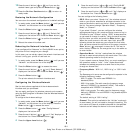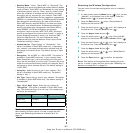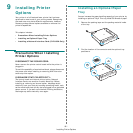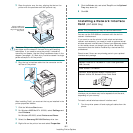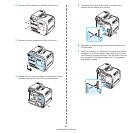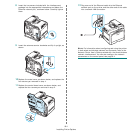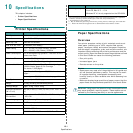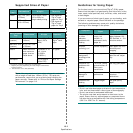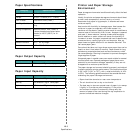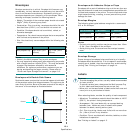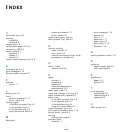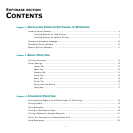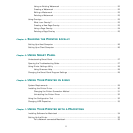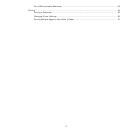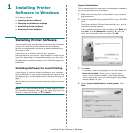
Specifications
10.
3
Paper Specifications
Paper Output Capacity
Paper Input Capacity
Category Specifications
Acid Content 5.5 ~ 8.0pH
Caliper 0.094 ~ 0.18mm (3.0 ~ 7.0mils)
Curl in Ream Flat within 5mm (0.02in.)
Cut Edge Conditions Cut with sharp blades with no visible
fray.
Fusing Compatibility Must not scorch, melt, offset, or
release hazardous emissions when
heated to 180°C (356°F) for 0.1
second.
Grain Long Grain
Moisture Content 4% ~ 6% by weight
Smoothness 100 ~ 250 Sheffield
Output Tray Capacity
Face-down 250 sheets of 75g/m
2
bond paper
Input Tray Capacity
Cassette 250 sheets of 75g/m
2
bond paper
MP tray 100 sheets of 75g/m
2
bond paper
Optional tray 500 sheets of 75g/m
2
bond paper
Printer and Paper Storage
Environment
Paper storage environmental conditions directly affect the feed
operation.
Ideally, the printer and paper storage environment should be at
or near room temperature, and not too dry or humid.
Remember that paper is hygroscopic; it absorbs and loses
moisture rapidly.
Heat works with humidity to damage paper. Heat causes the
moisture in paper to evaporate, while cold causes it to
condense on the sheets. Heating systems and air conditioners
remove most of the humidity from a room. As paper is opened
and used, it loses moisture, causing streaks and smudging.
Humid weather or water coolers can cause the humidity to
increase in a room. As paper is opened and used it absorbs any
excess moisture, causing light print and dropouts. Also, as
paper loses and gains moisture it can become distorted. This
can cause paper jams.
Care should be taken not to purchase more paper than can be
used in a short time (about 3 months). Paper stored for long
periods may experience heat and moisture extremes, which
can cause damage. Planning is important to prevent damage to
large supplies of paper.
Unopened paper in sealed reams can remain stable for several
months before use. Opened packages of paper have more
potential for environment damage, especially if they are not
wrapped with a moisture-proof barrier.
The paper storage environment should be properly maintained
to ensure optimum printer performance. The required condition
is 20° to 24°C (68° to 75°F), with a relative humidity of 45%
to 55%. The following guidelines should be considered when
evaluating the paper's storage environment:
• Paper should be stored at or near room temperature.
• The air should not be too dry or too humid.
• The best way to store an opened ream of paper is to rewrap
it tightly in its moisture-proof wrapping. If the printer
environment is subject to extremes, unwrap only the
amount of paper to be used during the day's operation to
prevent unwanted moisture changes.



